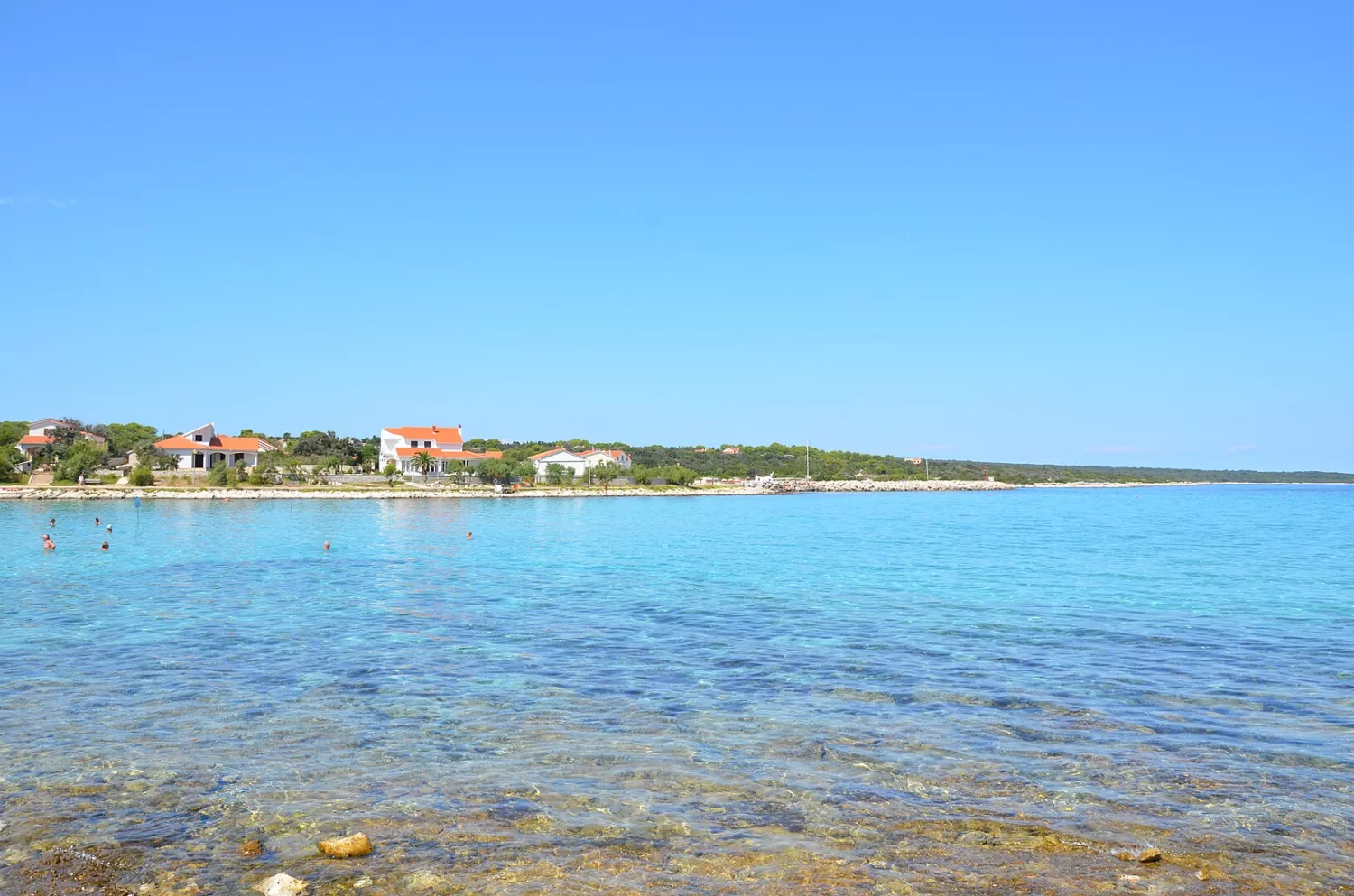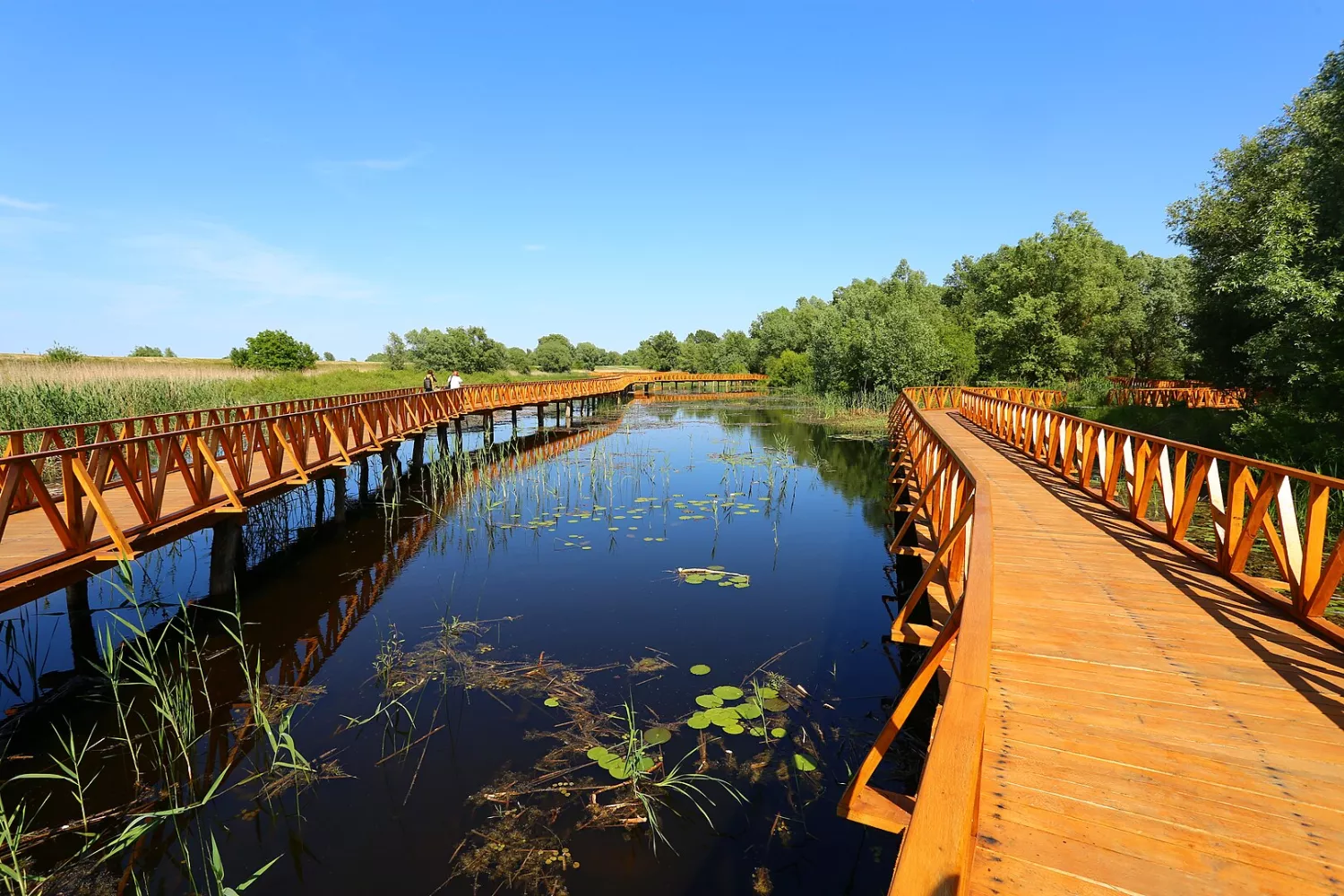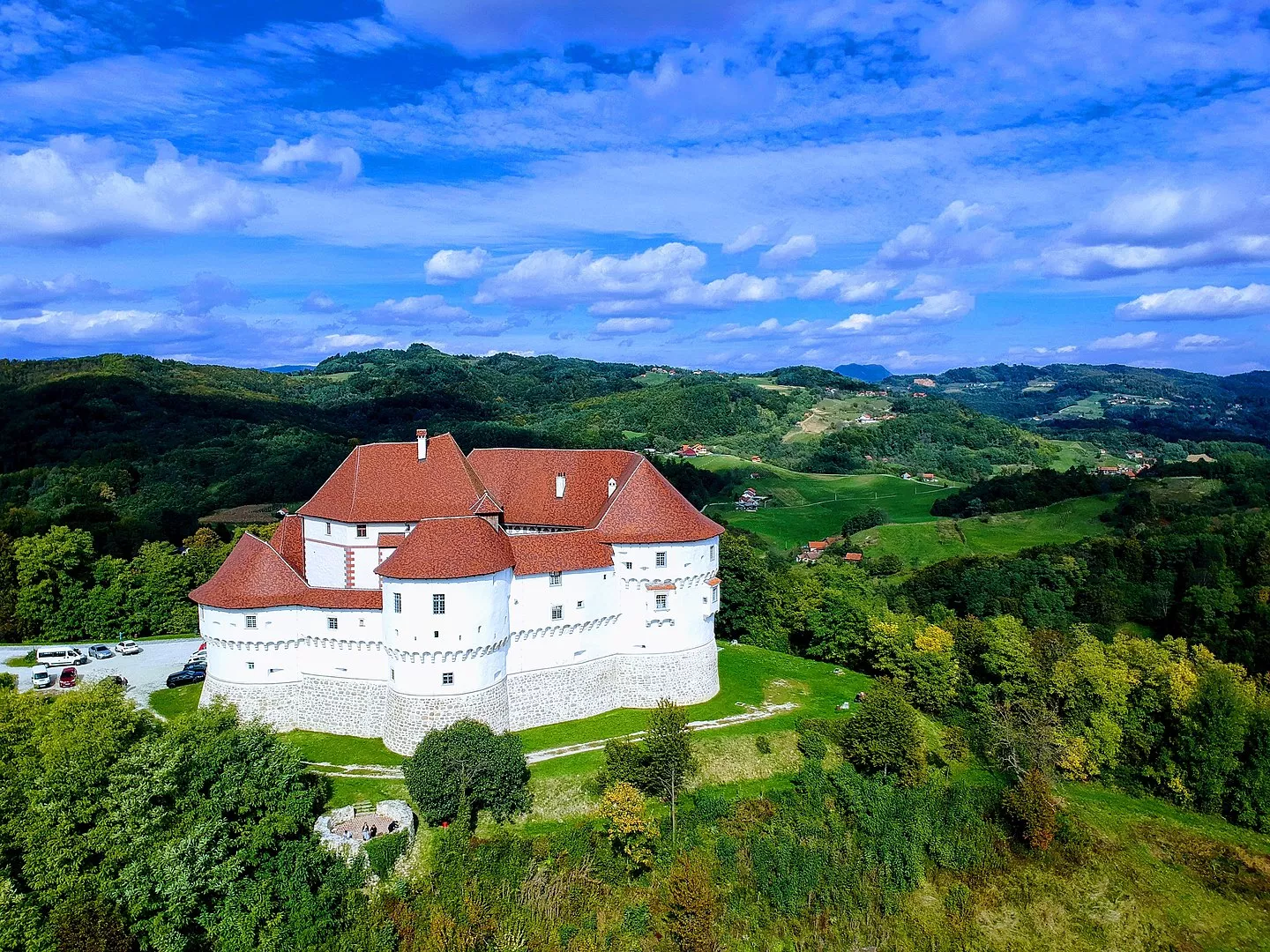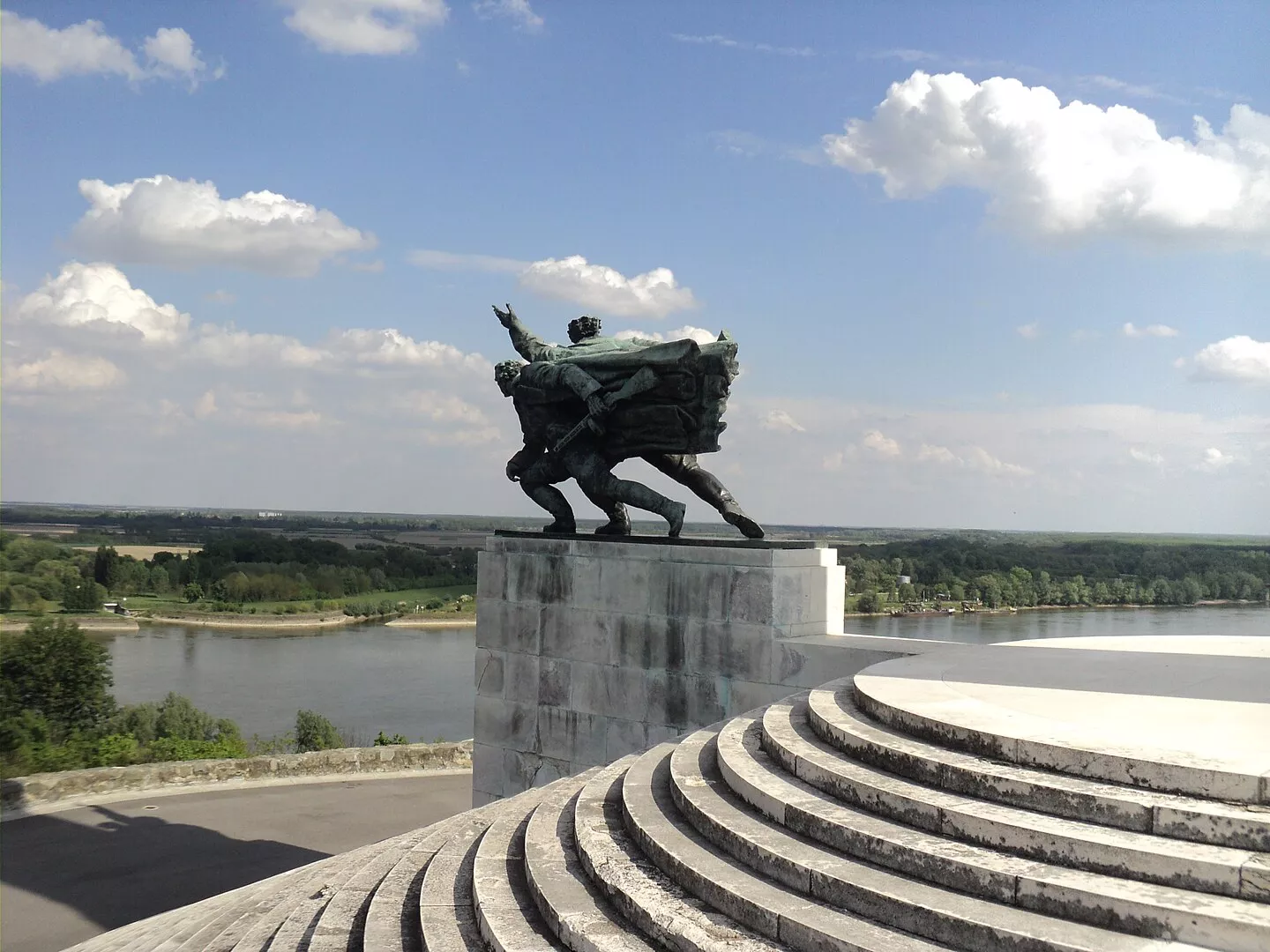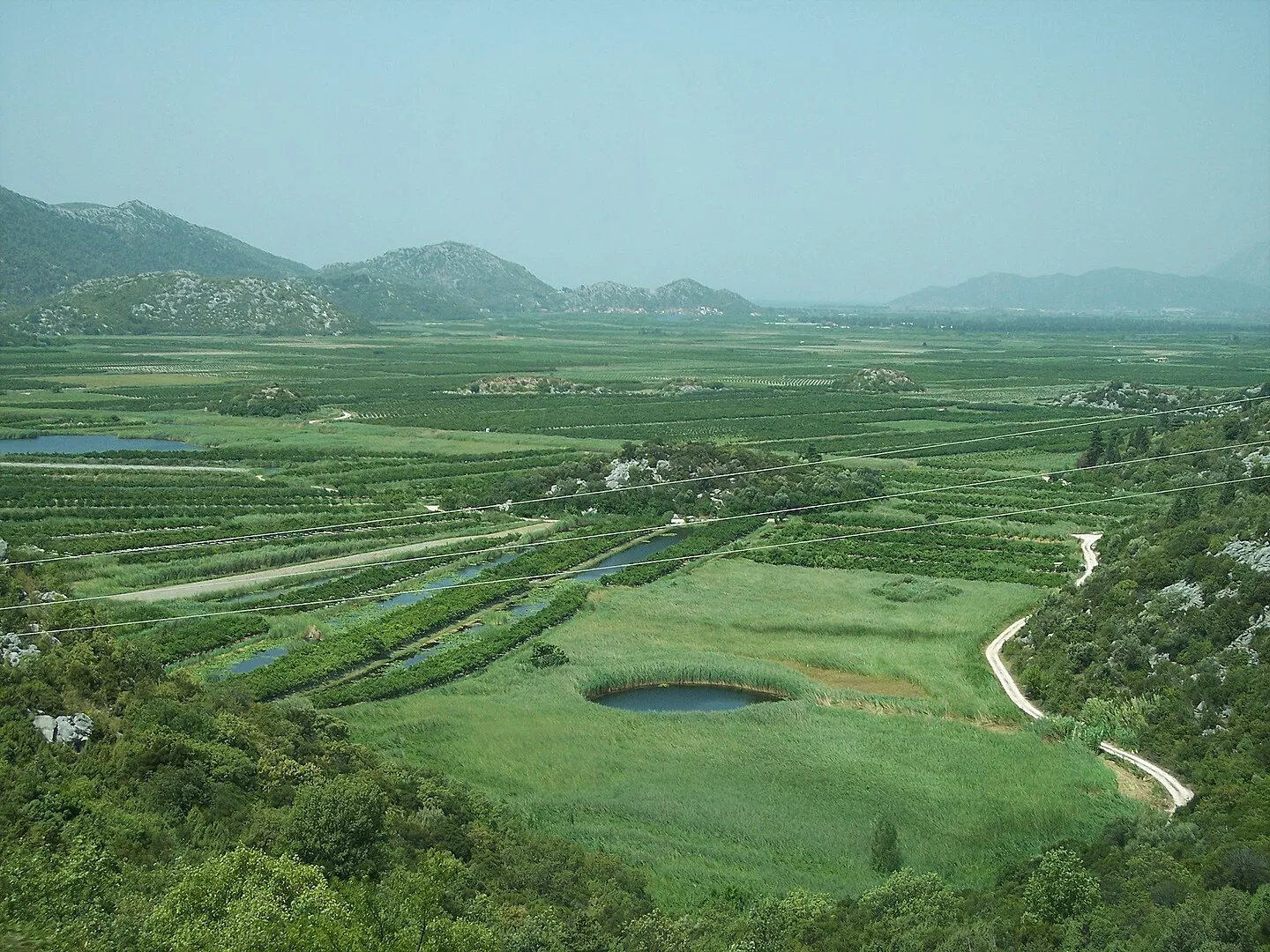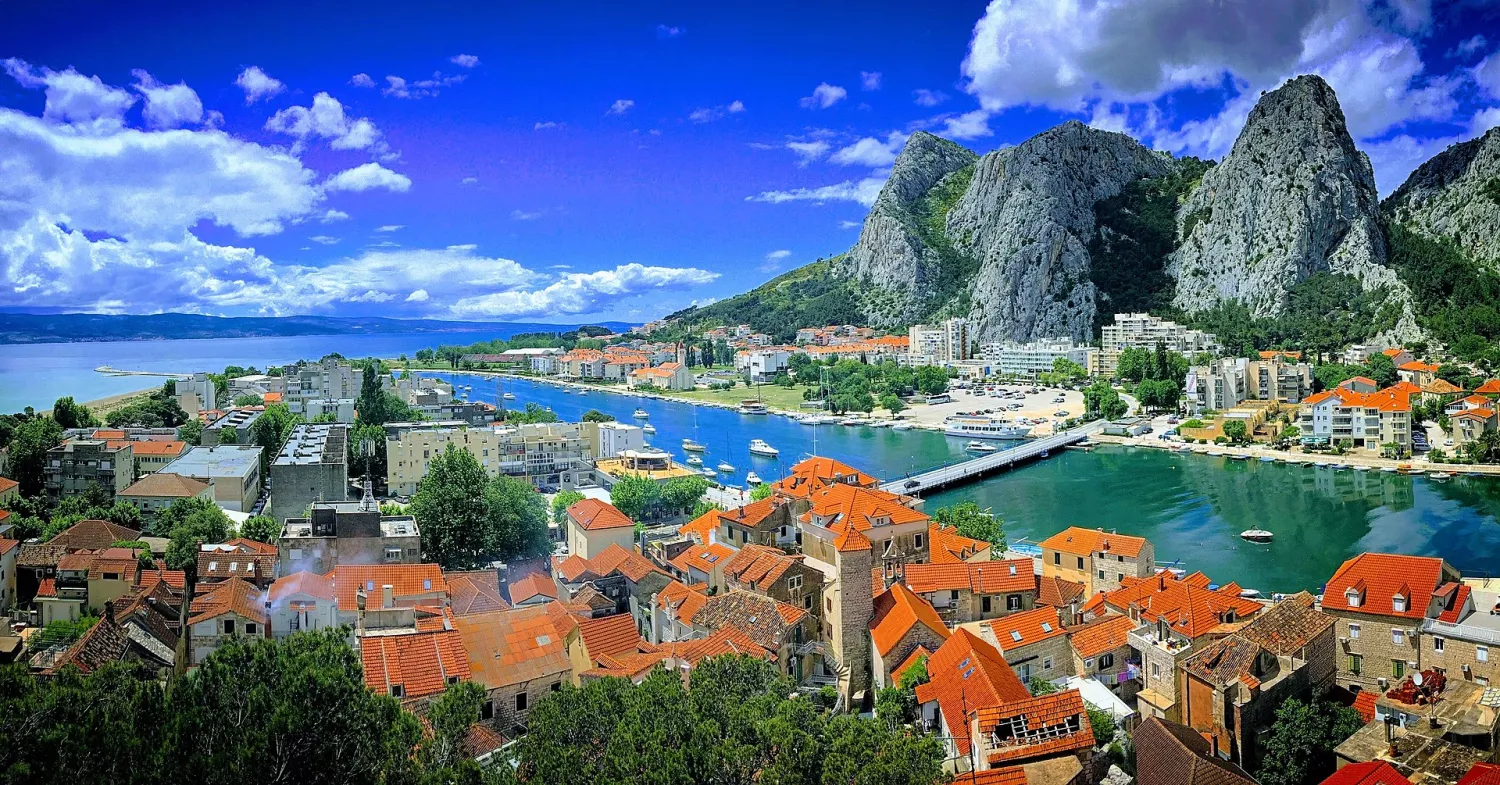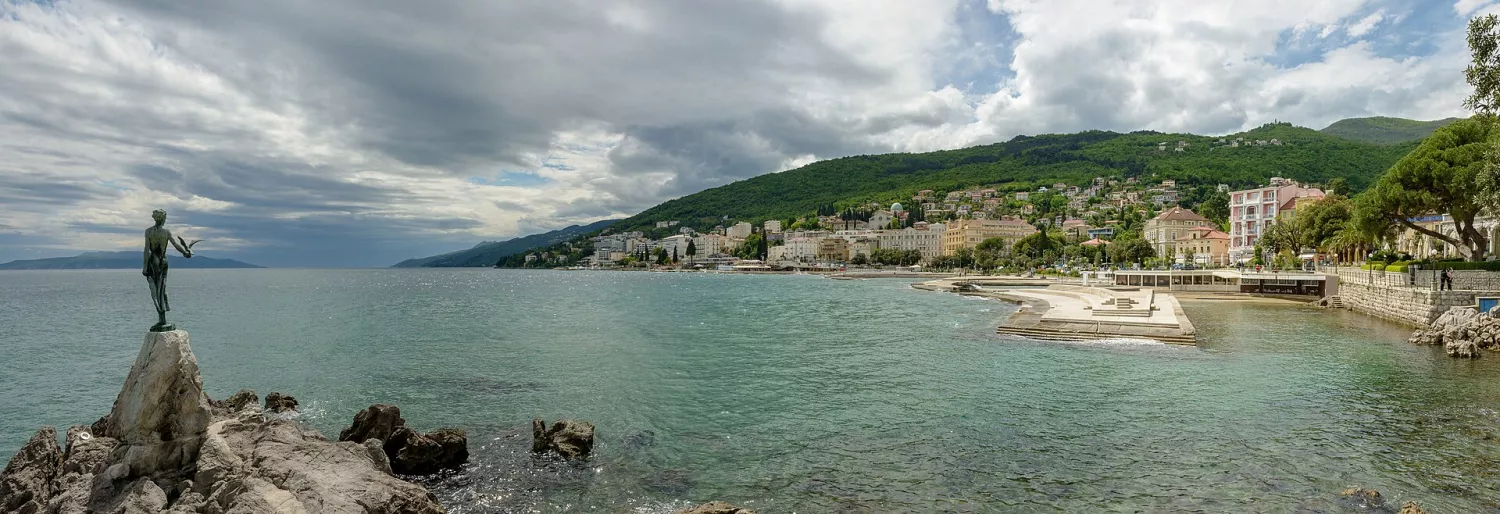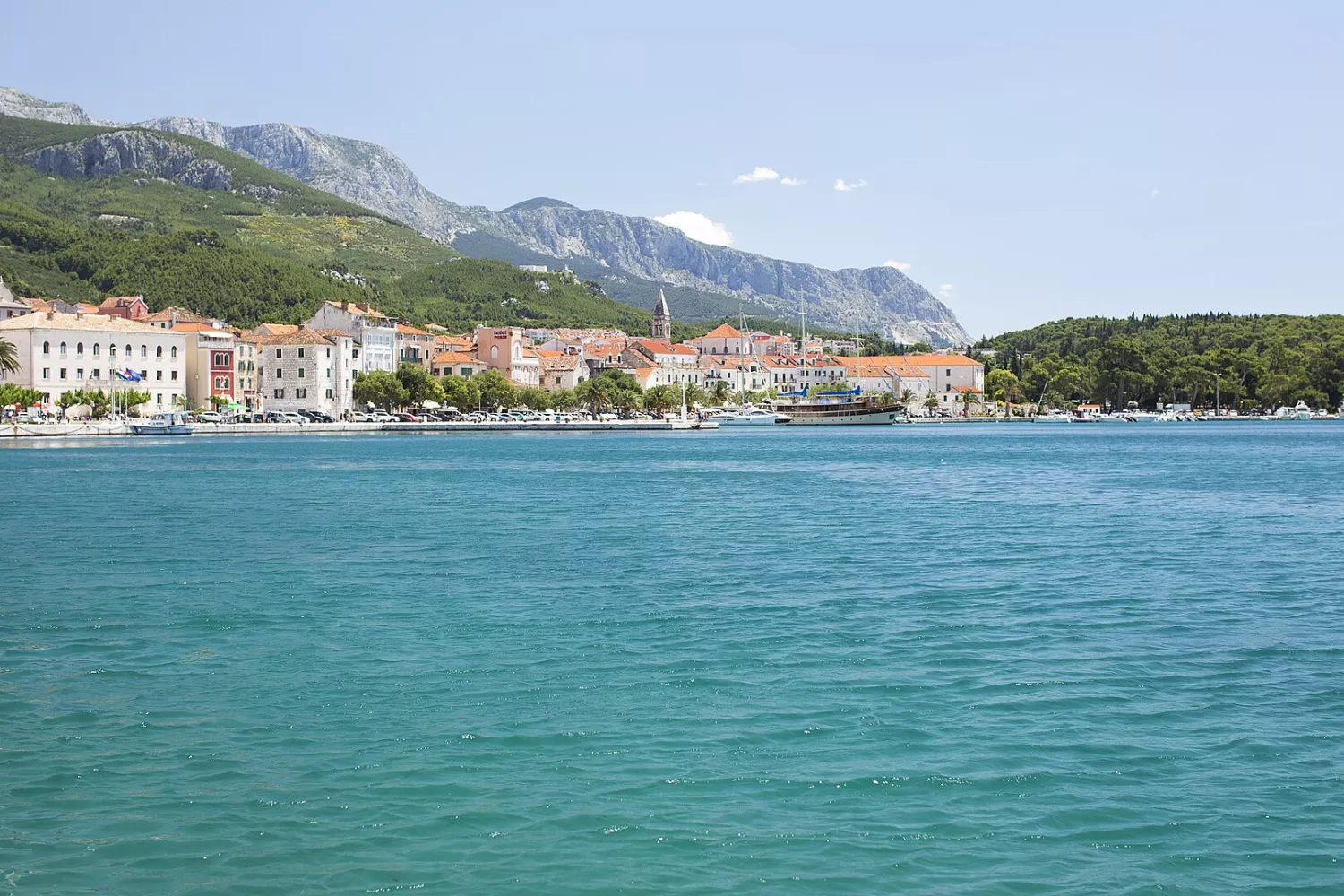Where to Go in Croatia: 14 Lesser-Known Destinations Beyond the Tourist Trail
Croatia, the Mediterranean gem that everybody wants to visit sooner or later, has a very well-established group of destinations that do not disappoint the curious traveler. As previously published (see "Where to Go in Croatia? Crafting Your Perfect Mediterranean Escape"), we compiled a compact list of 20 locations, including cities, towns, islands, national parks, or regions that must be seen to truly experience Croatia.
In this article, we collect a selection of 14 less-popular destinations (but still with tourists after all we are still in one of the most popular country when it comes to tourism) where you can delve deeper into the exploration of this marvelous country. After you have visited the previous 20 destinations, you'll want to spend some time in these idyllic, yet less popular and often less-crowded places in Croatia.
Table of Contents
Hide
1. Zlarin
Nestled along Croatia's coast lies the unassuming jewel of Zlarin, a haven of untouched beauty and cultural richness waiting to be discovered. With its pristine landscapes and an exceptionally rich historical and cultural heritage, Zlarin stands out as a testament to Croatia's diverse offerings beyond the well-trodden paths. Positioned strategically at the gateway of the St. Ante Channel, Zlarin has historically played a crucial role in guarding Šibenik, embodying both natural beauty and strategic importance.
Covering a total area of 8.19km², Zlarin greets visitors with a breathtaking vista as they step off the port, shielded from the winds that attract a plethora of sailors seeking refuge. The island's verdant greenery and tranquil atmosphere, interrupted only by the calls of seabirds and rustling leaves, offer a serene escape from the hustle and bustle of urban life. Renowned as the "Golden Island," Zlarin's allure lies not only in its sun-kissed shores and azure waters but also in its lush pine forests, secluded beaches, and hidden coves that beckon adventurers and leisure seekers alike.
But Zlarin's charm extends beyond its natural splendor; it is steeped in a rich tapestry of history and tradition. Its moniker "Golden Island" evokes mystery, whether derived from the Latin "Insula auri" meaning "island of gold," or from the radiant hues of its sunsets mirrored in the shimmering sea. The island's historical landmarks, including the Church of Our Lady of Rašelj and the Chapels of St. Roche and Simon from the 17th century, bear witness to its storied past and cultural significance.
Moreover, Zlarin's cultural vibrancy comes to life through its age-old traditions and festivities. Visitors are invited to delve into the island's heritage through the crafting of coral jewelry, a practice deeply intertwined with its identity. Witnessing the traditional ceremony held for sailors embarking on coral expeditions is a testament to the island's close-knit community and maritime legacy.
Beyond its shores, Zlarin's allure extends to the vibrant events hosted by the local yacht club, from the esteemed "Zlarinska regata krstaša" to the New Year's boat regatta. These gatherings offer a glimpse into the island's maritime heritage and celebrate its seafaring traditions in grand style.
In essence, Zlarin is more than just an island; it is a sanctuary for those seeking respite in nature's embrace and a gateway to Croatia's rich cultural tapestry. Whether wandering through its ancient streets, savoring the flavors of Dalmatian cuisine, or immersing oneself in its vibrant traditions, a journey to Zlarin promises an unforgettable experience—one that leaves an indelible mark on the soul and invites exploration beyond the beaten path.
2. Silba
Silba Island, nestled in the Adriatic Sea near the Kvarner Gulf, exudes tranquility and charm. With a mere 15 square kilometers of area, it belongs administratively to the Zadar Archipelago, sharing its maritime boundaries with the islands of Premuda and Olib. Once a hub of maritime activity boasting a fleet of a hundred sailing ships in the 18th century, Silba now hosts a population of under 300, primarily engaged in the tourism industry.
Its picturesque village, also named Silba, sits snugly at the island's narrowest point, where the Mul and Zalic bays converge. Silba, a pedestrian-only island save for essential services, offers a serene escape from urban noise, with cafes, restaurants, shops, and medical facilities catering to visitors' needs.
The island's crown jewel is Toreta, a quaint tower gracing the village center, offering panoramic views of Silba's idyllic landscape. Silba's allure extends beyond its landmarks; it boasts numerous small beaches and bays where travelers can bask in the Adriatic's crystal-clear waters.
Silba's verdant landscapes, adorned with Mediterranean vegetation and aromatic herbs, invite leisurely exploration, earning it a nomination for Nature Park status. Accommodations dot the island, mere minutes away from pristine sandy or gravel beaches, ensuring a blissful vacation immersed in untouched nature.
Silba's unique character shines through its tranquil atmosphere and absence of motorized vehicles, save for the occasional postman's scooter or tractor. Visitors can relish moments of absolute relaxation, indulging in beach outings, forest strolls, and engaging conversations with locals.
With its symbolic tower standing as a testament to the island's romantic allure, Silba embodies a bohemian ambiance, enriched by the presence of musicians and artists. Whether exploring secluded beaches or savoring Dalmatian specialties at local eateries, Silba promises an enchanting escape from the hustle and bustle of city life. As summer beckons, travelers seeking serenity and natural beauty find solace in Silba's tranquil shores, where each moment unfolds like a cherished memory in a cherished destination.
3. Mljet
Mljet Island, nestled in the Croatian Adriatic, captivates with its pristine beauty and unspoiled landscapes. As the first significant island encountered while sailing northward, Mljet stands out as Croatia's greenest gem, boasting lush Mediterranean vegetation, crystal-clear waters, and gentle sandy shores.
Renowned for its rich agricultural heritage, Mljet produces exquisite white and red wines, olives, and goat's cheese, adding to its allure as an island paradise. Its dense Mediterranean forests teem with diverse flora and fauna, while the surrounding sea abounds with fish and marine life.
The island's crown jewels are the twin salted lakes, Veliko and Malo Jezero, nestled at its northern tip. The picturesque St. Mary's Island in Veliko Jezero hosts an ancient Benedictine monastery, adding a touch of mystique to Mljet's natural splendor. Locals and visitors alike flock to these pristine lakeshores for leisurely swims and tranquil retreats.
Mljet's status as a Croatian National Park further enhances its appeal, particularly its northwest region, a favorite destination for travelers seeking immersion in nature's embrace. Regular ferry connections from Dubrovnik and Peljesac Peninsula ensure convenient access to this idyllic haven, while local excursions from Korcula Town offer additional opportunities for exploration.
Despite its southerly location, Mljet remains a hidden gem awaiting discovery, its captivating beauty drawing admiration even from esteemed visitors like Prince Charles. Whether seeking solace amidst verdant forests or serenity on secluded shores, Mljet promises an unforgettable Adriatic oasis getaway, inviting travelers to unwind and reconnect with nature's tranquility.
4. Kopački Rit Nature Park
Kopački Rit Nature Park, nestled in eastern Croatia within the municipalities of Bilje and Kneževi Vinogradi, is a testament to the country's natural splendor. Positioned northwest of the confluence of the Drava and Danube rivers, this park borders Serbia, encompassing a mesmerizing mosaic of backwaters, ponds, and wetlands along the Danube.
Renowned as one of Europe's largest and most attractive preserved wetlands, Kopački Rit is a haven for diverse flora and fauna. Its zoological reserve hosts around 260 bird species, including majestic white storks, Eurasian coots, and the elusive white-tailed eagle. Visitors can marvel at the rich biodiversity while exploring the park's pristine landscapes on guided tours by panoramic ships, boats, or horse-drawn wagons.
Kopački Rit's aquatic realm teems with over 40 fish species, while its terrestrial habitats provide sanctuary for red deer, European wildcats, and Eurasian otters. The park's botanical treasures, including rare specimens like the white water lily and black sedge, contribute to its ecological significance.
Access to this natural marvel is facilitated by its proximity to Osijek, a major town in the region, and excellent transportation links. Visitors can embark on cycling expeditions along international bicycle routes, discovering the park's verdant forests and emerald waters. Angling and hunting opportunities abound in designated areas, offering immersive experiences for outdoor enthusiasts.
As visitors immerse themselves in the primeval ambiances of its wetlands and floodplain forests, they encounter the iconic herds of deer and a plethora of birdlife, including rare species like the white-tailed eagle and black stork.
5. Zagorje
Hrvatsko Zagorje, nestled in northern Croatia, is a cultural haven steeped in history and natural beauty. Shielded by the Medvednica Mountain, this picturesque region boasts rolling hills, verdant forests, and charming villages, earning it the moniker "backland" or "behind the hills."
With a population exceeding 300,000, Zagorje is a vibrant tapestry of tradition and heritage, spanning Krapina-Zagorje County and parts of Varaždin County. The town of Krapina, renowned as the cultural capital of the Kajkavian dialect, hosts the annual Festival of Kajkavian Song, celebrating the region's rich linguistic heritage.
Zagorje's allure extends beyond its idyllic landscapes, offering a treasure trove of medieval castles, churches, and archaeological sites. Visitors can explore the majestic Old Town of Varaždin, adorned with Baroque and Rococo architecture, or wander through the ancient halls of Trakošćan and Veliki Tabor castles, steeped in centuries of history.
For gastronomic delights, Zagorje tantalizes the taste buds with its renowned dishes. Indulge in the savory delights of Zagorje strudel, a delectable cheese pastry, or savor the flavors of turkey with mlinci, a traditional delicacy perfect for festive occasions.
Nature lovers will find solace in Zagorje's thermal spas, nestled amidst pristine landscapes and rejuvenating thermal waters. From the bustling streets of Varaždin to the tranquil ambiance of Kumrovec's Ethno village, Zagorje offers a diverse array of experiences for every traveler.
Immerse yourself in the prehistoric world at the Krapina Museum of Neanderthals, where the mystical allure of ancient Europe comes to life. Discover the fascinating history of Neanderthals through captivating exhibits and architectural marvels inspired by their ancient habitats.
Whether strolling through cobblestone streets or marveling at medieval fortresses, Zagorje invites you to uncover its timeless charm and immerse yourself in the rich tapestry of Croatian culture and heritage.
6. Lastovo Island
Lastovo, a gem nestled in the Adriatic Sea, captivates with its serene landscapes and rich history. With a population of less than 1,000 inhabitants and spanning a mere 18 square miles, Lastovo exudes an aura of tranquility and seclusion. Situated approximately 9 miles south of Korcula, its main towns of Ubli and Lastovo beckon travelers seeking solace amidst nature's embrace.
Steeped in tradition and cultural heritage, Lastovo was closed off to foreigners until 1988, preserving its pristine beauty and remote allure. Today, the island remains a hidden gem, with its rugged terrain and limited amenities attracting discerning travelers in search of authentic experiences off the beaten path.
Lastovo's claim to fame lies in its designation as part of the Lastovo Islands Nature Park, encompassing its surrounding archipelago. With 70% of its terrain cloaked in lush forests, Lastovo ranks as one of Croatia's most wooded islands, second only to Mljet.
Beyond its natural splendor, Lastovo boasts another celestial accolade – "the island of bright stars." Renowned for its pristine night skies, Lastovo offers unparalleled stargazing opportunities, drawing astronomers and enthusiasts from across Europe.
Rich in history, Lastovo bears witness to centuries of conquests and cultural influences. From Roman settlements to Venetian architecture, the island's storied past is reflected in its ancient churches and medieval fortifications.
The heart of Lastovo beats with the rhythm of its vibrant traditions, epitomized by the annual Poklad carnival. Rooted in legend and folklore, this colorful celebration pays homage to the islanders' resilience and community spirit.
Architecture enthusiasts will marvel at Lastovo's Renaissance houses adorned with distinctive cylindrical chimneys known as fumari. These architectural marvels, along with the historic Struga lighthouse, showcase the island's enduring charm and heritage.
With its 46 small islands, 46 churches, and 46 vineyards, Lastovo offers a haven for nature lovers, sailors, and gastronomes alike. From its idyllic landscapes to its vibrant culture, Lastovo invites travelers to embark on a journey of discovery and rediscover the timeless allure of the Adriatic.
7. Velebit Mountains & National Park
The Velebit Mountains and National Park, a majestic natural wonder stretching across 2200 square kilometers, command awe with their rugged beauty and ecological significance. Nestled between the Adriatic Sea to the west and the Gacka, Lika, and Gračac fields to the inland side, this expansive reserve is a sanctuary of biodiversity and geological marvels.
Protected since 1978 for its exceptional natural values, the Velebit Nature Park has earned its place in UNESCO's World Network of Biosphere Reserves. Within its boundaries lie two national parks: Paklenica National Park and Northern Velebit National Park, each contributing to the conservation of Croatia's rich natural heritage.
Carved from sedimentary rock, limestone, dolomite, and Velebit breccias, the park is a testament to the forces of nature, boasting a kaleidoscope of karst formations. From labyrinthine caves to dramatic cliffs, the Velebit Mountains harbor a wealth of underground and surface wonders, including the famed Velebit degenia, an endemic plant species.
Amidst this rugged landscape, remnants of human history dot the terrain, bearing witness to centuries of habitation. Ancient churches, mountain huts, and shepherd settlements speak of a bygone era, offering insights into the customs and lifestyles of mountain dwellers. Visitors can delve into the region's cultural tapestry by exploring educational trails such as the Terezijana and the Kudin Most, which unravel tales of the past amid scenic vistas.
At Zavratnica, a protected landscape, travelers can bask in the splendor of one of the most beautiful coves along the Adriatic coast. Nearby, the Cerovac Caves unveil a subterranean realm steeped in history, with cave bear remains and ancient artifacts offering glimpses into prehistoric life.
Further south, the Northern Velebit National Park beckons with its pristine landscapes and diverse ecosystems. Designated a national park in 1999, this mountainous expanse is a haven for rare flora and fauna, including the endemic Sibiraea altaiensis. Hikers can traverse the renowned Premužić's Trail, which meanders through breathtaking scenery, offering panoramic views of the Adriatic Sea and beyond.
Adding to the park's allure are the numerous ruins of summer lodges, remnants of a pastoral lifestyle that once thrived amidst these rugged peaks. Special reservations like Hajdučki kukovi and Rožanski kukovi offer glimpses into untouched wilderness, where nature reigns supreme.
In the heart of the park lies Zavižan, home to Croatia's highest meteorological station and a botanical reserve teeming with endemic species. From the misty forests to the rocky summits, the Velebit Mountains and National Park stand as a testament to the enduring power of nature and the resilience of life in all its forms.
8. Baranja Region
Bordered by the majestic Drava and Danube rivers and bisected by the Croatian-Hungarian state border, the Baranja Region exudes an air of mystique and allure. Enveloped by the enchanting embrace of swamps to the east, sheltered by river mouths in the south and southeast, and beckoning with its expansive wine roads and paths to the north and northeast, Baranja remains a bastion of untold stories and hidden treasures.
Despite the modernization sweeping across its landscapes, with renovated bridges and emerging tourist routes, Baranja retains its enigmatic charm, guarded closely by its inhabitants who hold dear the secrets of generations past. From tales older than memory itself to the rituals of life and death, from the cultivation of exquisite wines to the fiery allure of hot peppers, every aspect of Baranja life is steeped in tradition and folklore.
Weddings adorned with elaborate buše masks, the vigilant guardianship of ripening grapes by pudarine, and the intricate embroidery of paunići motifs on traditional attire are but glimpses into the rich tapestry of Baranja culture. Amidst the rustic charm of straw beds and the flickering glow of hanging candles, the essence of Baranja's ethnographic magic thrives, etched into the very faces of its people who dwell beyond the beaten path.
Baranja's allure lies not in its readiness to reveal itself, but in its ability to captivate the imagination while keeping its most profound secrets close to heart. As travelers traverse its winding roads and immerse themselves in its timeless landscapes, they are drawn into a world where the past intertwines seamlessly with the present, creating an experience that is both captivating and unforgettable.
9. Neretva Delta
The Neretva Delta, nestled at the convergence of the Neretva River and the Adriatic Sea, is a hidden gem in the southern reaches of Croatia. Spanning over 40,000 acres, this unique ecosystem is one of the largest wetlands in the country, boasting a rich tapestry of flora and fauna.
Protected under the Ramsar Convention as an internationally significant wetland, the Neretva Delta is a haven for biodiversity. Its lush marshes and waterways provide a habitat for a diverse array of species, including the elusive Dalmatian pelican and the playful otter. With over 300 different bird species, it ranks as the second largest ornithological area in Europe, making it a paradise for birdwatchers and nature enthusiasts alike.
Within the delta, designated protected areas such as Prud, Orepak, and Podgredom serve as ornithological reserves, safeguarding vital habitats for resident and migratory birds. Additionally, the protected landscape of Lake Modro oko adds to the delta's conservation efforts, preserving its natural beauty for generations to come.
Despite its ecological significance, the Neretva Delta remains relatively undiscovered by mainstream tourism, offering visitors a tranquil retreat away from the hustle and bustle of crowded destinations. Here, one can immerse themselves in the untouched wilderness, embarking on cycling adventures, serene boat trips along the winding waterways, or simply enjoying a refreshing swim in the river's cool embrace.
Steeped in cultural heritage and surrounded by breathtaking landscapes, the Neretva Delta invites exploration and discovery. Whether marveling at the vibrant avian life, delving into the region's rich history, or simply basking in the tranquility of its natural surroundings, a journey to the Neretva Delta promises an unforgettable experience of Croatia's hidden treasures.
10. Omiš
Omiš, nestled in the scenic Dalmatia region of Croatia, stands as a testament to both historical intrigue and modern allure. Situated approximately 25 kilometers southeast of Split, this coastal gem lies at the convergence of the majestic Cetina River and the azure Adriatic Sea.
With a population of around 14,936 inhabitants spread across its 266 square kilometers, Omiš embodies a harmonious blend of tradition and contemporary vibrancy. Its fame resonates most notably during the cherished festival of Dalmatian a cappella singing groups, a celebration that epitomizes the town's essence and allure. This annual event, a highlight of Omiš's vibrant summer, unfolds amidst the town's picturesque plazas and sacred churches, filling the air with melodious tunes and cultural richness.
Omiš boasts a rich tapestry of architectural wonders, including eight captivating churches that stand as testaments to its storied past. Once the domain of daring pirates who ruled the seas with an iron fist during the 12th and 13th centuries, Omiš's history is steeped in maritime exploits and daring adventures. Led by the legendary dukes of the Kačić family, these audacious seafarers dominated the Adriatic, challenging even the mightiest naval powers of the time.
The town's strategic location, guarded by the imposing Omiška Dinara mountain, provided the perfect haven for these seafaring renegades. Over time, however, Omiš evolved beyond its piratical origins, transitioning into a thriving center of commerce and culture under Venetian rule. The remnants of this bygone era are evident in the town's fortified walls and historic landmarks, which bear witness to centuries of conquest and resilience.
Today, Omiš beckons travelers with its stunning natural beauty and an array of recreational activities. From the expansive sandy beaches, the largest in Dalmatia, to the winding river canyon teeming with opportunities for rafting, canyoning, and ziplining, the town offers a playground for adventurers and nature enthusiasts alike. The juxtaposition of mountains cascading into the sea creates a breathtaking backdrop for exploration, with countless trails and vistas waiting to be discovered just minutes from the town center.
As visitors traverse the cobblestone streets and bustling promenades of Omiš, they encounter a tapestry of cultures and traditions woven into the fabric of daily life. From the quaint villages dotting the coastline to the vibrant culinary scene offering tantalizing seafood delights, each corner of Omiš invites exploration and discovery.
11. Biokovo Nature Park
Biokovo Nature Park, an awe-inspiring mountain range that stands as the crowning jewel of the Central Dalmatian coastline, captivates visitors with its dramatic beauty and rugged allure. As the sole nature park in the region, Biokovo offers a unique blend of pristine wilderness and breathtaking vistas, making it a haven for nature enthusiasts and adventurers alike.
Rising abruptly from the azure waters of the Adriatic Sea, Biokovo's imposing peaks soar to heights of over 1,500 meters, creating a striking contrast against the coastal landscape. Its sheer cliffs and rocky outcrops, cloaked in verdant vegetation, serve as a sanctuary of tranquility and natural splendor.
During the scorching summer months, Biokovo's forbidding summits provide a welcome respite from the coastal heat, offering cool breezes and invigorating mountain air. The mountain's diverse ecosystem harbors a wealth of natural treasures, from endemic plant species like the rare Biokovo bellflower to hidden caves, pits, and sinkholes waiting to be explored.
For outdoor enthusiasts, Biokovo presents a paradise of hiking and cycling trails, weaving through olive groves, vineyards, and fragrant pine forests. These scenic pathways lead adventurers to picturesque viewpoints and historical remnants, offering glimpses into the mountain's storied past as a haven for shepherds and wanderers.
The crown jewel of Biokovo is undoubtedly its highest peak, Sveti Jure, towering majestically at 1,762 meters above sea level. Accessible by road from both the Makarska Riviera and the Dalmatian hinterland, this iconic summit offers panoramic vistas of the shimmering sea and distant islands, rewarding intrepid travelers with a sense of accomplishment and wonder.
Covering an expansive area of 19,550 hectares, Biokovo Nature Park encompasses a diverse range of landscapes, from rugged cliffs to lush valleys teeming with biodiversity. At its heart lies the Kotisina Botanical Garden, a sanctuary of rare plant species located just a stone's throw from the bustling town of Makarska.
Venturing deeper into the park, visitors encounter the mystical realm of Zabiokovlje, a pristine wilderness steeped in legend and lore. Here, amidst the untamed beauty of Biokovo, one can immerse themselves in the timeless rhythms of nature, forging a deep connection with the land and its rich heritage.
In every season, Biokovo Nature Park beckons travelers with its unparalleled beauty and untamed wilderness, inviting them to embark on a journey of discovery and adventure. Whether hiking to the summit of Sveti Jure or simply basking in the tranquility of its ancient forests, visitors to Biokovo are sure to be captivated by its timeless allure and boundless spirit.
12. Opatija
Opatija, a picturesque coastal town nestled along the stunning Adriatic Sea, beckons travelers with its rich history, Mediterranean charm, and scenic beauty. Once revered as a favored winter health resort in the 19th century, Opatija has transformed into a beloved year-round destination, enchanting visitors from around the globe with its mild climate and breathtaking landscapes.
Nestled at the foothills of Mount Učka, Opatija boasts a captivating setting, where verdant hills meet the azure waters of the Kvarner Gulf. The town's idyllic location offers a perfect blend of natural splendor and cultural heritage, inviting exploration and discovery at every turn. Surrounded by charming small towns steeped in history, Opatija exudes a timeless elegance, with its streets lined with stately villas and historic landmarks.
At the heart of Opatija lies the majestic Park Svetog Jakova, home to the 14th-century Benedictine abbey from which the town derives its name. Here, visitors can admire the neo-Romanesque Church of the Annunciation, with its striking green cupola, and explore the historic Villa Angiolina, a testament to the town's illustrious past as a haven for aristocrats and luminaries.
One of Opatija's most iconic landmarks is the Maiden with the Seagull, a symbol of the town's enduring allure and scenic beauty. Perched on a promontory overlooking the sea, this enchanting statue by Zvonko Car captures the essence of Opatija's seaside charm and serves as a beloved symbol of the town's maritime heritage.
For those seeking relaxation and rejuvenation, Opatija offers an array of wellness amenities and services, from luxurious spa resorts to tranquil parks and promenades. The town's renowned Lungomare coastal promenade and Šetalište Carmen Sylve forest path provide idyllic settings for leisurely strolls and scenic vistas, while the nearby Villa Angiolina Park showcases a diverse array of plant species from around the world.
From its historic churches and opulent villas to its vibrant cultural scene and scenic waterfront, Opatija captivates visitors with its timeless charm and unmatched beauty. Whether exploring its historic landmarks, indulging in gourmet cuisine, or simply basking in the warmth of its Mediterranean climate, travelers are sure to be enchanted by the enchanting allure of Opatija, where every corner reveals a new story waiting to be discovered.
13. Makarska
Located along the scenic Adriatic coastline of Croatia, Makarska emerges as a prominent tourist hub, enticing travelers with its captivating blend of natural beauty and cultural charm. Situated approximately 60 kilometers southeast of Split and 140 kilometers northwest of Dubrovnik, this vibrant town finds its home between the imposing Biokovo mountains and the azure expanse of the Adriatic Sea.
At the heart of Makarska lies its distinctive horseshoe-shaped bay, bordered by a palm-fringed promenade that serves as a vibrant hub of activity. Here, travelers can meander along the waterfront, indulging in the delights of quaint cafes, lively bars, and stylish boutiques while soaking in panoramic views of the harbor and the bobbing boats that adorn its waters.
Makarska serves as the focal point of the renowned Makarska Riviera, a coveted stretch of coastline that extends for 60 kilometers between the municipalities of Brela and Gradac. Offering a harmonious blend of cosmopolitan flair and family-friendly ambiance, the town beckons visitors with its pristine beaches, crystalline waters, and an array of recreational activities.
Adventure-seekers will find ample opportunities for exploration amidst the rugged terrain of the nearby Biokovo mountains. From scenic hiking trails to adrenaline-pumping mountain biking routes, the region offers a plethora of outdoor adventures against a backdrop of breathtaking vistas stretching from the coastline to the distant islands of Brac, Hvar, and Korcula.
In Makarska's charming old town, travelers can wander through narrow cobblestone streets, admire historic landmarks such as the main church square adorned with a bustling market, and explore the ancient Franciscan monastery, home to a fascinating collection of sea shells.
Accommodation options abound in Makarska, with a diverse range of hotels, guesthouses, and seaside resorts catering to every preference and budget. Whether seeking a tranquil retreat by the sea or a lively escape filled with entertainment and nightlife, Makarska offers something for every discerning traveler.
From its rich cultural heritage to its breathtaking natural surroundings, Makarska invites visitors to immerse themselves in its timeless allure and discover the hidden treasures awaiting exploration along the sun-kissed shores of the Adriatic. Whether basking in the warm glow of sunset over the limestone promenade or embarking on thrilling adventures amidst the rugged beauty of the Biokovo mountains, travelers are sure to be enchanted by the irresistible charm of Makarska.
14. Poreč
Poreč, situated in the heart of the western coast of Istria, emerges as a vibrant town steeped in culture, tourism, sport, and entertainment. Renowned for the beauty of its public spaces and its unwavering cleanliness, Poreč has garnered recognition and accolades as a premier destination on the Istrian peninsula.
As you enter the historic core of Poreč, you are transported back in time onto a stage that has witnessed over 2000 years of history unfold. The town's layout, a testament to ancient Roman ingenuity, features a meticulously planned grid system with streets such as Decumanus and Cardo Maximus still preserved in their original forms. Landmarks like the Roman square of Marafor, adorned with ancient temples and Romanesque houses, offer glimpses into Poreč's rich architectural heritage.
At the heart of Poreč's cultural landscape stands the magnificent Euphrasian Basilica, a masterpiece of Byzantine architecture rebuilt in the 6th century under the patronage of Bishop Euphrasius. Designated as a UNESCO World Heritage Site, this basilica serves as a testament to Poreč's significance as a historical and cultural center.
Poreč's allure extends beyond its ancient streets and architectural marvels to its pristine coastline, stretching for 37 kilometers between the Mirna River and the Lim valley. Here, tourists can explore self-contained centers like Plava Laguna, Zelena Laguna, and Brulo, each offering a unique blend of sun, sea, and leisure activities.
From the historic town center to the array of museums and galleries housed in centuries-old palaces, Poreč's rich heritage is palpable at every turn. Even in the off-season, weekend visitors from neighboring Croatia, Slovenia, Austria, and Italy flock to the area, drawn by its cultural charm and scenic beauty.
Poreč's commitment to sports and recreation is evident in its year-round utilization of state-of-the-art sports complexes, catering to enthusiasts from all walks of life. Whether exploring ancient ruins, basking in the sun-drenched coastline, or indulging in cultural delights, visitors to Poreč are sure to be captivated by its timeless charm and vibrant spirit, making it a destination worthy of exploration and discovery.


